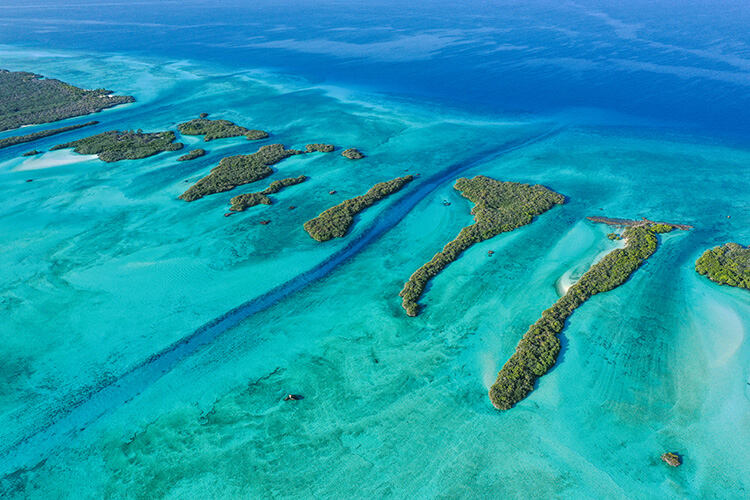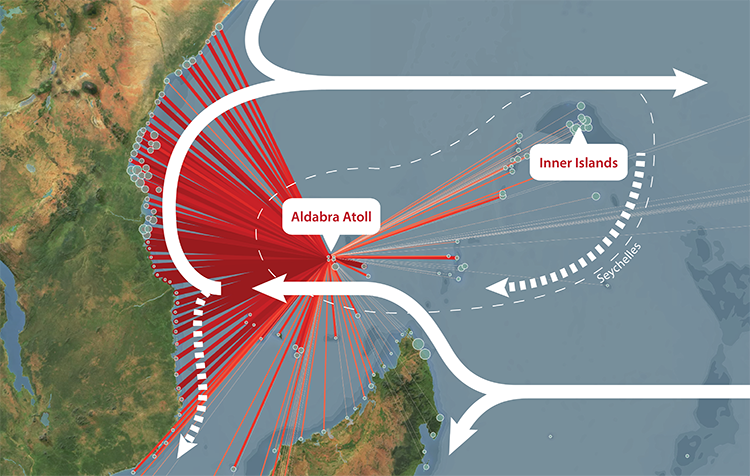
Oxford University scientists discover remote reefs form a ‘coral superhighway’ spanning more than a million square kilometres
Despite being scattered across more than a million square kilometres, new research (published in Scientific Reports) has revealed that remote coral reefs across the Seychelles are closely related. Using genetic analyses and oceanographic modelling, researchers at Oxford University demonstrated for the first time that a network of ocean currents scatter significant numbers of larvae between these distant islands, acting as a ‘coral superhighway.’
‘This discovery is very important because a key factor in coral reef recovery is larval supply,’ says April Burt of the university’s biology department and lead author of the study. ‘Although corals have declined alarmingly across the world due to climate change and a number of other factors, actions can be taken at local and national scale to improve reef health and resilience. These actions can be more effective when we better understand the connectivity between coral reefs by, for instance, prioritising conservation efforts around coral reefs that act as major larval sources to support regional reef resilience.’
Working alongside coral reef management organisations and the Seychelles government, University of Oxford researchers collected coral samples from 19 different reef sites around the islands. A comprehensive genetic analysis revealed recent movement of genes between all sample sites, possibly within just a few generations. The finding suggests that coral larvae may be frequently transferred between different populations. The genetic analyses were then coupled with oceanographic modelling to simulate the process of larval dispersal, offering researchers a clear visualisation of the pathways coral larvae take between reefs.

The models revealed that dispersal of coral larvae directly between reefs across the Seychelles is highly plausible. For example, coral larvae spawned at the remote Aldabra atoll could disperse westwards towards the east coast of Africa via the East African Coastal Current. From here, they would then travel north along the coast, with some potentially even reaching the South Equatorial Counter Current, which could bring them eastwards again back towards the Inner Islands of Seychelles.
While these long-distance dispersal events are possible, it is likely that much of the connectivity between remote islands across the Seychelles may be established through ‘stepping-stone’ dispersal. This suggests that centrally located coral reefs in Seychelles, and possibly East Africa, may play an important role in linking the most remote islands. The researchers suggest that this data could help identify major larval sources to be prioritised for inclusion in marine protected areas or active reef restoration efforts.
‘This study couldn’t come at a more timely moment,’ says ecologist and senior author of the study Lindsay Turnbull. ‘The world is once again watching, as El Niño devastates coral reefs throughout the Indian Ocean. Now we know which reefs will be crucial to coral recovery, but we can’t pause in our commitment to reducing greenhouse gas emissions and stopping climate change.’




